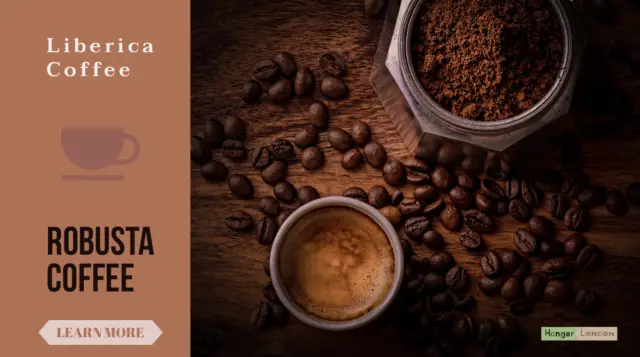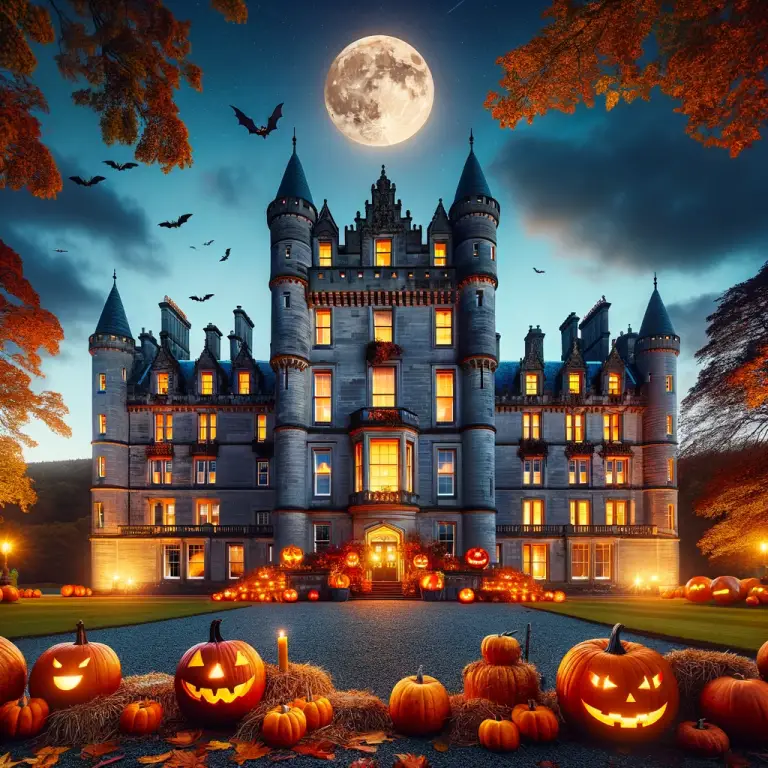Liberia coffee is a unique coffee variety that originates from the West African country of Liberia. Although it is not widely known in the global coffee market, it is gaining popularity among coffee enthusiasts and specialty coffee shops in London.
98% of coffee production: Arabica and Robusta
In the world of coffee, there are two main types of coffee bean, Arabica, and Robusta and 100’s of variations from these 2 coffee bean types. In total accounts for almost 98% of world coffee production.
3rd place goes to Liberica Coffea or Liberian Coffee with around 2%. To keep this post neat and tidy we are going to look at the not so well-known Liberica Coffee, with a brief comparison against the market leaders
The Coffee from the Highlands of Liberia
Liberia coffee is grown in the highlands of Liberia, which has a unique climate and soil that is ideal for coffee cultivation. The coffee cherries are hand-picked and processed using traditional methods to preserve their unique flavors.
Liberica Coffee bean no. 3
Liberica is not that easy to get hold off, this side of the world, or even over in the US. The coffee bean is grown not from a low hung plant but more from a tree, that can grow to an impressive 18 meters. The leaves are large with a notable leathery look and feel. The nature of the plant is such that it can withstand harsh growing environments and temperatures. Harvesting the beans is somewhat of a challenge due to the height, grown in certain parts of Asia, northern Borneo Malaysia, and West Africa to name but a few locations.
So what of the taste of Liberica coffee, the taste is something to get used to, bitter, earthy taste to it. Closer to Robusta than to an arabica. One comment online paints a picture of Drinking Liberica Coffee not dissimilar to liquid tobacco, while another found it the best coffee they had tasted with the most intense sweetness.
Production of Liberica is also somewhat of acquired learning, with Liberica Coffee farms in Malaysia being represented by farms with more than half a century of experience in the processing and manufacturing of Liberica coffee beans. The Beans future lay more towards the high-quality specialty segment of the Coffee market.
Coffee is one of the most popular beverages in the world, and it has been for centuries. With its rich aroma and energizing effects, coffee has been enjoyed by people of all ages, races, and cultures. There are many different types of coffee beans, each with its unique flavor profile, but one variety that is gaining popularity is Liberica coffee.
Liberica coffee is a unique and rare variety of coffee that is grown mainly in the Philippines, Malaysia, and Indonesia. It was first discovered in Liberia in the 19th century and was brought to Asia to replace the Arabica coffee plant, which was devastated by the coffee rust disease.
What makes Liberica coffee so unique is its flavor profile. It has a distinct taste that is different from the more common Arabica and Robusta varieties. Liberica coffee has a smoky, woody, and slightly floral flavor that is often compared to tobacco. Its aroma is also quite distinct, with a hint of fruity notes and a woody scent.
Liberica coffee beans are much larger than other varieties, and they have a unique shape. They are asymmetrical and oblong, with one end slightly rounded and the other end pointed. The beans are also harder than other types of coffee beans, making them difficult to roast.
Because of its unique flavor profile and rarity, Liberica coffee is often used for blends, rather than being sold as a single-origin coffee. However, some coffee connoisseurs prefer Liberica coffee and seek it out specifically for its distinctive taste.
Liberica coffee is also known for its resilience to pests and diseases, making it an attractive option for coffee farmers in areas where coffee rust is prevalent. However, Liberica coffee is not as productive as other varieties, and it requires a specific set of growing conditions to thrive.
Finding Liberica Coffee in London
Liberica coffee is primarily sold in specialty coffee shops and roasteries that focus on single-origin and specialty coffee. These shops are known for their attention to detail in sourcing, roasting, and brewing coffee, and they often work directly with farmers and cooperatives to ensure high-quality coffee.
The growing popularity of Liberia coffee in London is part of a larger trend towards specialty coffee and the exploration of unique and diverse coffee varieties from around the world.
Closing Thoughts On Liberica Coffee
, Liberica coffee is a unique and rare variety of coffee that is gaining popularity among coffee enthusiasts. Its distinct taste and aroma make it an attractive option for coffee blends, and its resilience to pests and diseases makes it a viable option for coffee farmers in areas affected by coffee rust. While not as widely available as other varieties, Liberica coffee is worth seeking out for those who want to explore the many different flavors of coffee.
Robusta Coffee Bean no. 2
Robusta is number 2 in the world rankings of coffee productions, a coffee which contains two and a half percent more caffeine than other types of coffee, producing a strong taste. They harvest the coffee bean in western sub-Saharan Africa, Indonesia, with top producers based in Vietnam.
Robusta is the coffee you would best serve as an espresso. Strong taste, bitter because of the higher caffeine content.
They harvest the plant to be around 5 meters in height, requiring a lot of water but can take the heat of the day well.
Robusta coffee is one of the most widely grown coffee species in the world. It is known for its strong, earthy flavor and high caffeine content. In this article, we’ll explore the Robusta Coffee Bean No. 2, its characteristics, and some unusual facts about this popular coffee.
What is Robusta Coffee Bean No. 2?
Robusta Coffee Bean No. 2 is a specific grade of Robusta coffee that is grown primarily in Vietnam, the world’s largest producer of Robusta coffee. It is considered to be one of the highest grades of Robusta coffee due to its large size, uniform shape, and low defect rate.
Robusta Coffee Bean No. 2 is often used in blends with Arabica coffee to create a balanced flavor profile. Robusta beans are known for their high caffeine content, which gives a robust, bold flavor to coffee blends. It is commonly used in espresso blends due to its rich crema and strong flavor.
Characteristics of Robusta Coffee Bean No. 2
Robusta Coffee Bean No. 2 has a distinct flavor profile that sets it apart from other types of coffee. It is known for its bold, earthy flavor and low acidity. The coffee has a heavy body and a thick, rich crema that is ideal for espresso drinks.
In terms of appearance, Robusta Coffee Bean No. 2 is larger and rounder than other Robusta beans, with a slightly curved shape. The beans have a smooth, even surface and a deep, dark color.
Robusta Coffee Bean No. 2 is highly resistant to pests and disease, making it easier to grow than other types of coffee. This is one of the reasons why it is so popular in Vietnam, where coffee farmers face many challenges due to the country’s tropical climate.
Robusta Coffee Bean No. 2 has a higher caffeine content than Arabica coffee. This is due to the species’ genetic makeup, which produces beans with more caffeine. Robusta coffee has almost twice the amount of caffeine as Arabica coffee, which gives it a stronger, more energizing effect.
Robusta Coffee Bean No. 2 is often used in instant coffee due to its low cost and consistent flavor profile. Instant coffee is made by freeze-drying or spray-drying brewed coffee, and Robusta beans are often preferred because they hold up better during this process than Arabica beans.
The Robusta Coffee Bean No. 2 has a unique chemical composition that makes it highly resistant to heat and oxidation. This makes it an ideal choice for dark roasts, which require high temperatures and longer roast times.
Robusta Coffee Bean No. 2 is not just used for coffee. It is also used as a flavoring agent in various food products, including ice cream, chocolate, and pastries.
In conclusion, Robusta Coffee Bean No. 2 is an important coffee variety that has unique characteristics and uses. Its bold flavor and high caffeine content make it a popular choice for coffee blends, while its resistance to pests and disease make it easier to grow than other types of coffee. Whether you’re a coffee lover or a foodie, Robusta Coffee Bean No. 2 is definitely worth trying!
Arabica Bean no. 1
The number one produced coffee in the world, lower caffeine making an altogether smoother taste, very aromatic. It’s so popular just had to mention it.
Coffee is one of the most beloved beverages in the world, and it all starts with the humble coffee bean. While there are many types of coffee beans, one stands out as the most popular: the Arabica bean. Arabica beans are renowned for their complex flavor profile, low acidity, and smooth finish. But there’s more to this little bean than meets the eye. In this blog post, we’ll explore some unusual facts about Arabica Bean No. 1 that you might not have known.
The Arabica Bean is Native to Ethiopia
While coffee is grown all over the world, the Arabica bean is native to Ethiopia. Legend has it that a goat herder named Kaldi noticed that his goats became particularly energetic after eating the berries from a certain tree. Kaldi tried the berries himself and felt the same effects, leading him to share the discovery with his fellow villagers. This is how coffee was first discovered, and it all started with the Arabica bean.
Arabica Beans are Grown at High Elevations
Arabica beans are typically grown at high elevations, between 2,000 and 6,000 feet above sea level. This makes them more difficult to cultivate, as the higher altitudes mean cooler temperatures and less oxygen, which can affect the growth of the coffee plants. However, it’s these harsh growing conditions that give Arabica beans their unique flavor profile and make them so highly prized.
The Arabica Bean Accounts for Over 60% of Global Coffee Production
Arabica beans are the most popular coffee bean in the world, accounting for over 60% of global coffee production. This is due in part to the fact that Arabica beans are typically of higher quality than other types of coffee beans, such as Robusta beans. However, the high demand for Arabica beans also means that they can be more expensive than other types of coffee.
Arabica Beans Come in Many Different Varieties
There are many different varieties of Arabica beans, each with its own unique flavor profile. Some of the most popular Arabica bean varieties include Bourbon, Typica, and Caturra. Each variety has its own unique taste characteristics, and coffee growers often specialize in growing specific varieties.
The Flavor Profile of Arabica Beans Depends on Where They are Grown
The flavor profile of Arabica beans can vary depending on where they are grown. Factors such as altitude, soil type, and climate can all affect the taste of the coffee. For example, coffee grown in Central and South America tends to have a mild, sweet flavor, while coffee from Africa is often more fruity and floral.
Arabica Beans are Vulnerable to Climate Change
Climate change is having a significant impact on coffee production worldwide, and Arabica beans are particularly vulnerable. The higher altitudes where Arabica beans are typically grown are becoming warmer, which can affect the growth and quality of the coffee plants. This is leading to concerns about the future of Arabica coffee production and the impact it could have on the industry as a whole.
In conclusion, Arabica Bean No. 1 is more than just a popular coffee bean. It’s a fascinating plant with a rich history and unique characteristics that make it highly prized by coffee lovers around the world. As we continue to enjoy our daily cup of coffee, it’s important to remember the hard work and dedication that goes into growing and harvesting the beans that make it all possible.




